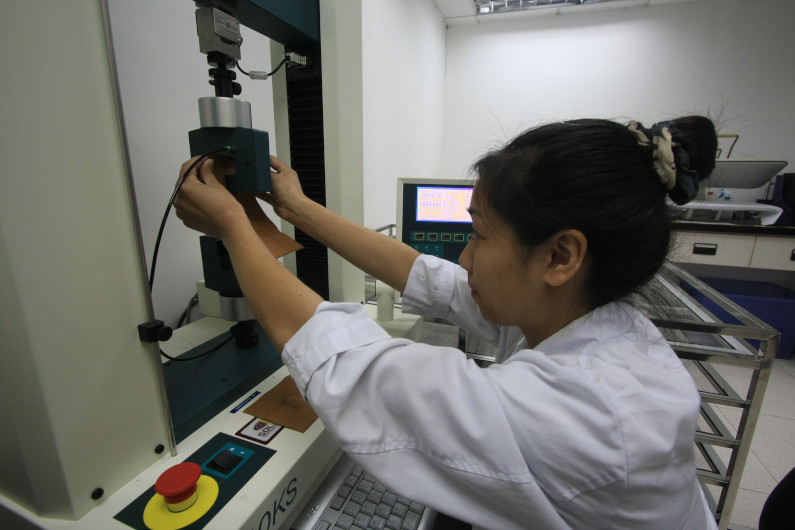Many leading consumer goods companies today focus intently on product quality — and for good reasons. Selling high-quality products can significantly impact customer satisfaction and brand loyalty. It can also prevent customer returns and one-star reviews, which lead to poor business results.
As a consumer product business, implementing quality control (QC) measures is one of the most vital steps to ensure your products meet customer requirements. As such, you may be interested in learning more about how these measures work and how to implement them, but before you can do that, you first need to understand what quality control actually is.
In this article, we’ll talk about what QC is, why it’s essential, and provide tips to help you build your own QC program.
Table of Contents
What is Quality Control?

Quality control (QC) refers to all the actions a company takes to verify that their products meet specific quality standards. According to ISO 9000, it is the “part of quality management focused on fulfilling quality requirements,” and it generally involves inspections and testing.
Quality control focuses on the steps you take to identify defects before, during, or after the manufacturing process. For example, you might conduct quality inspections while your goods are at the factory to check for defects before shipping.
By implementing QC measures, you can catch issues with a particular batch of products before they get into your customers’ hands. That way, you can deal with the problem and avert a crisis.
What is the Difference Between Quality Assurance and Quality Control?

While the terms appear similar, they are distinct from each other. ISO 9000 defines quality assurance (QA) as the “part of quality management focused on providing confidence that quality requirements will be fulfilled.”
In other words, QA involves taking proactive steps to prevent low-quality products from being made in the first place. For example, you might conduct a factory audit to assess your manufacturer on various criteria to determine if their capabilities suit your needs.
On the one hand, you’ve got quality control, which is about finding defects in products that have already been manufactured or are in process. On the other hand, you’ve got quality assurance, which is about setting up systems that make defects less likely. Both QA and QC work together to ensure high-quality results for your business. Learn more about the difference between QA and QC.
Why is Quality Control Important?

Investing in effective QC brings a wide array of benefits to your business, including:
- Improved company reputation
- Compliance with relevant standards and regulations
- Higher-quality products
- Increased customer satisfaction, loyalty, and retention
- Better brand recognition and differentiation from competitors
Essentially, robust QC practices will contribute to improved quality and consistency in your products. This, in turn, makes customers happy, leading to increased revenue.
What is a Quality Control Inspection?

Inspections are a vital part of an effective quality control plan. A product inspection allows you to verify that a batch of goods meets specific quality standards. It can involve checking packaging and labeling, how the product functions, and adherence to physical requirements.
Of course, your factory should generally conduct their own inspections and have QC measures in place. However, to check their work, you can either send an inspector from your business or hire a third-party inspection company (like Insight) to conduct inspections for you.
There are many types of product inspections, including:
• Pre-Production Inspections (PPI). Pre-production inspections are conducted once raw materials arrive at the factory. They provide an opportunity to spot issues with your materials before they’re used to make your products.
• During Production Inspections (DUPRO). DUPRO inspections are conducted when at least 20% of production is complete. This allows you to pinpoint any errors in goods coming off the production line before an entire batch is affected.
• Pre-Shipment Inspections (PSI). This is the most common type of inspection, conducted once the product shipment is 100% complete and at least 80% packaged. This inspection ensures products meet quality standards before they’re shipped out.
• Loading Inspections (LI). Loading inspections occur once your product shipment is fully completed and packaged. These create the opportunity to catch any problems before your goods are loaded into a shipping container.
• Sort Inspections (SI). Sort inspections are conducted once an error is discovered. They allow you to inspect a batch for known issues to weed out defective products.
Carefully consider which inspections will best serve your manufacturing and QC processes — it will likely be a combination of the above inspection types. Think about the points in your process where it would be most critical to identify errors. Remember, the earlier you identify an issue, the easier it tends to be to fix.
What is the Difference between Inspection and Quality Control?

Product inspections alone don’t make up the entirety of quality control — sometimes, specialized testing is required. For example, lab testing may be required to verify the quality of your materials or to ensure they don’t contain hazardous chemicals.
For many products, visual and functional inspection alone are insufficient to ensure regulatory compliance. For example, CPSIA is a regulation that applies to all children’s products sold in the US. If you sell children’s products, you must work with an accredited testing lab to ensure your goods are safe and compliant.
3 Tips for Implementing a Quality Control Program

Here are our top three tips for implementing an effective QC program:
1) Incorporate customer feedback
Customer feedback provides vital insights into what is and isn’t working with regard to your products. Read reviews and offer opportunities for consumers to share their opinions through surveys. Inviting feedback from your customer base allows you to better understand what aspects of your product quality may need improvement.
2) Know and comply with regulations
While understanding what the public wants is crucial for sales success, it’s even more critical to know which government safety regulations and requirements apply to your products.
Determine whether lab testing is required to verify your goods’ compliance with specific standards before you start selling. You don’t want to cover the cost of replacing an entire shipment of goods that’s been deemed unfit for distribution.
3) Listen to factory suggestions
If your manufacturer ever raises a concern about your processes, materials, or any other aspect of production: listen to them. It’s unlikely that you know more than your manufacturer about their factory. It’s wise not only to heed any advice you receive but also to actively ask if your manufacturer has any concerns before beginning the production process.
Insight Quality Services

When you need help with any step of the quality management process, Insight Quality Services is here to be your partner and adviser. We offer product inspection services, lab testing services, and factory audit services in 17 countries. Contact us for a consultation today, or explore our free guide on how to prepare for a quality inspection.
Free Guide: How to Prepare for an Inspection
Download this free guide to successfully preparing for your product inspections.





0 Comments